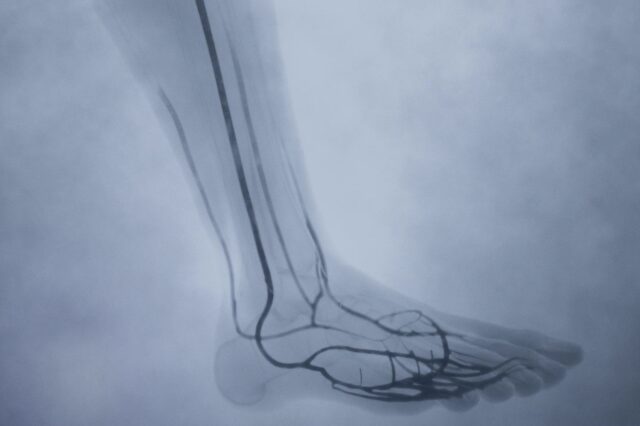Study shows alternative to amputation for patients with peripheral artery disease, preserves mobility

For patients with chronic limb-threatening ischemia, or CLTI, a form of severe vascular disease, amputation is a common treatment option. When the arteries that carry blood to the lower leg and foot become blocked, complications can occur, like wounds that won’t heal or severe infection.
Now, a study published in the New England Journal of Medicine explored a minimally invasive treatment that will allow patients to keep their leg — and their lives as they know them.
“If we can heal these patients’ wounds, get them back to work and enjoying their families, we’re not just improving medicine — we are changing lives,” said Ben Jacobs, M.D., who led the portion of the study that took place at UF Health. He is an assistant professor of vascular surgery and endovascular therapy in the UF College of Medicine.
UF Health Shands Hospital is one of 20 sites in the U.S. participating in the PROMISE II clinical trial, which explored a new form of treatment for patients with end-stage peripheral artery disease. Almost 2 million Americans are estimated to be living with CLTI.
In many cases, the disease is closely associated with diabetes and other comorbidities, making other surgical options like bypass surgery not possible. Often, these patients have no option other than amputation of the affected foot or lower leg. The trial’s goal was to determine whether there was a way for patients to keep their leg, Jacobs said.
According to the study, 76% of patients were able to keep their leg at least six months after undergoing transcatheter arterialization of the deep veins, or TADV, using the LimFlow System. This enables blood to bypass permanently blocked arteries in the leg by disabling vein valves in the lower leg so that a vein can carry blood downward into the foot, bringing blood and oxygen to starved tissue.
About 43% of the study’s patients were Black, Hispanic or Latino, representative of those who are at greater risk for amputation. Patients who enrolled in the study also had nonhealing wounds on their feet and/or legs. But six months after treatment, their wounds were healed or in the process of healing — and their reported pain levels had decreased.
Although patients will continue to be monitored, the study’s results are extremely promising, said Jacobs, whose expertise and clinical interests center around trying to salvage patients’ limbs.
“When you are able to preserve a patient’s ambulation, or ability to independently move around, you’re preserving their quality of life,” Jacobs said. “We often take something as simple as walking for granted, and being able to help patients maintain that ability as long as we can carries as much significance as curing any other disease.”
Support for the study came from LimFlow.